

Some Books About Alaska. Introduction Juvenile Adult Fiction Adult Non-fiction Addresses for Selected Alaskana Bookstores Introduction The Alaska State Library produces this annual publication because we feel that such an annotated list is of value to libraries in Alaska.
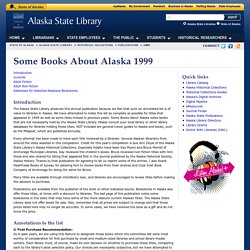
Madeline Hunter Lesson Plan Template. Pin by Lifelong Learning on Arctic Mini-Unit. BOEM Videos. WatchKnowLearn Educational Videos. Institute of Education Sciences (IES) Home Page, a part of the U.S. Department of Education. What are the products and uses of petroleum? - FAQ. Petroleum products include transportation fuels, fuel oils for heating and electricity generation, asphalt and road oil, and the feedstocks used to make chemicals, plastics, and synthetic materials found in nearly everything we use today.

About 74% of the 6.89 billion barrels of petroleum that we used in 2013 were gasoline, heating oil/diesel fuel, and jet fuel. Petroleum products and their relative share of total U.S. petroleum consumption in 2013: Gasoline 46% Heating Oil/Diesel Fuel 20% Jet Fuel (Kerosene) 8% Propane/Propylene 7% NGL & LRG1 6% Still Gas 4% Petrochemical Feedstocks 2% Petroleum Coke 2% Residual/Heavy Fuel Oil 2% Asphalt and Road Oil 2% Lubricants 1% Miscellaneous Products/Special Naphthas 0.4% Other Liquids 1% Aviation Gasoline 0.1% Waxes 0.04% Kerosene 0.02% 1 Natural Gas Liquids and Liquid Refinery Gases excluding Propane/Propylene.
Learn more: How many gallons of diesel fuel and gasoline are made from one barrel of oil? - FAQ. U.S.
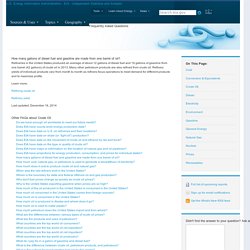
Energy Information Administration - EIA - Independent Statistics and Analysis A-Z Index A-Z Index. Oil Spill: <em>Exxon Valdez</em>, 1989. Ranger Rick on the Big Oil Spill. Talking With Kids About the Gulf Oil Spill. A Guide for Parents and Teachers News about the recent oil spill in the Gulf of Mexico is in the newspaper, on TV and the radio.

This disaster is difficult enough for adults to comprehend and deal with. One Ocean. Life on Earth would not be possible without the ocean.
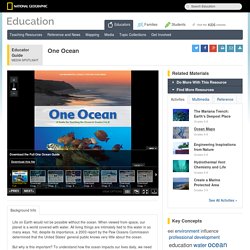
When viewed from space, our planet is a world covered with water. All living things are intimately tied to this water in so many ways. Science Resource Guide TOC page. After 25 years, Exxon Valdez oil spill hasn't ended. Twenty-five years ago on March 24, the oil tanker Exxon Valdez slammed into Bligh Reef and spilled more than 11 million gallons of crude oil into the cold, clear waters of Alaska's Prince William Sound -- one of the "last best places" on Earth.

The oil charged through Prince William Sound and out into the Gulf of Alaska, damaging more than 1,300 miles of some of the most remote, wild shoreline in this country. This happened 25 years ago, so we might note the anniversary as we do any other historical event. That, however, would imply that the oil spill is over. It's not, and likely never will be. The sound's coastal ecosystem is permanently damaged. For Educators. Gulf Oil Spill Collection. Resources Multimedia Lessons and Activities.
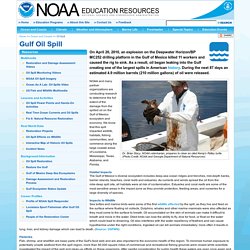
BOEM Economics Division. The Economics Division: Conducts economic, statistical, engineering and cost-benefit analyses to evaluate and implement policies for the energy and minerals programs relating to lease terms, bidding systems, auction designs, operating conditions and rulemaking.Works to ensure receipt of fair market value for the rights to produce offshore energy and mineral resources.Develops and maintains economic and statistical models and databases in support of sale design, resource evaluation, post-sale and operational activities, rulemaking, revenue sharing and royalty relief programs.Generates economic assumptions and scenarios for use in post-sale tract evaluations and in applications for royalty relief.
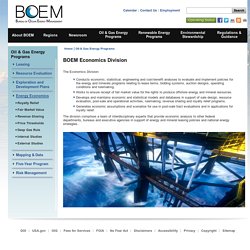
The division comprises a team of interdisciplinary experts that provide economic analysis to other federal departments, bureaus and executive agencies in support of energy and mineral leasing policies and national energy strategies.